Do you also get irritated when your file explorer suddenly stops working or responding? If yes, we are here to help!
File Explorer or Windows Explorer is an important yet the first way to navigate through your computer. It has within all the options available that allows you to see everything that has been stored on your device. It, hence, becomes quite frustrating when it does not respond or suddenly stops working.
What reasons cause this to happen is the biggest question that hits my mind whenever I face the issue. So, for your help we have listed here the major reasons we have encountered that causes Explorer not responding error.
- File Explorer history is clogged and needs to be cleared.
- Changes to display settings might hamper the working of File Explorer. If they are recently changed, you can fix it by reverting them back.
- Windows 10 version is outdated. Check for Windows updates and install them if any.
- System Drive is out of space. Free up disk space.
Fixes: File Explorer Not Responding
Here are listed the best possible fixes to resolve File Explorer not responding error.
List of Contents
Method 1: Restart Explorer Using Task Manager
- On your Windows computer, open Task Manager by right-clicking on the empty space on the Taskbar and choose Task Manager.

- If the Task Manager window opens in compact mode, click on More Details. Otherwise, under the Processes tab, locate File Explorer or Windows Explorer and bring your cursor over it.
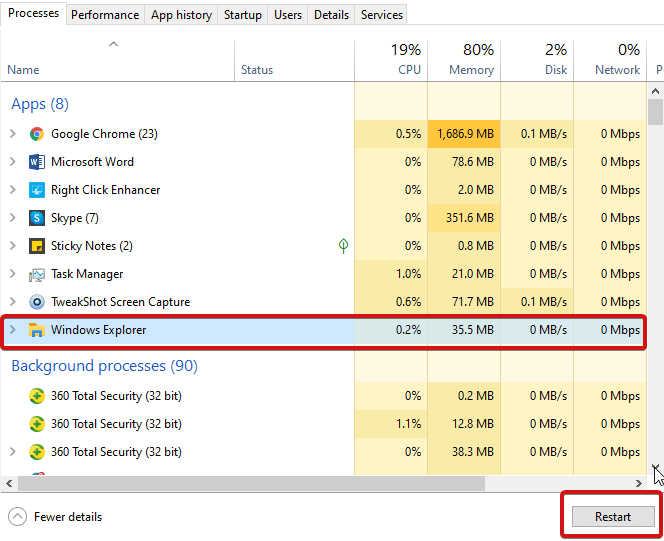
- You’ll see a Restart button at the bottom right. Click on it to restart the explorer window.
- Wait for File Explorer to restart.
- Now, check if you are able to smoothly use File Explorer.
Note: Meanwhile, you’ll see that the Taskbar, Windows and Desktop screen will disappear. But don’t worry, that’s normal.
Method 2: Restart Windows Explorer Using Command Prompt.
Command Prompt has a solution for almost every issue your Windows computer might come across. Here’s what you need to do to fix the ‘Windows Explorer not responding’ error.
- Firstly, open the Run window using Win+R keys.
- Type in cmd and press OK.
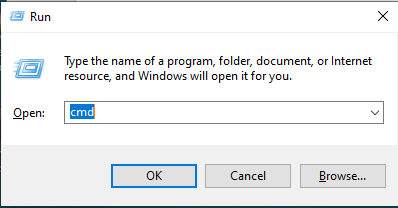
- In the cmd window, type in the following command to stop Windows Explorer- taskkill /f /im explorer.exe and press Enter.
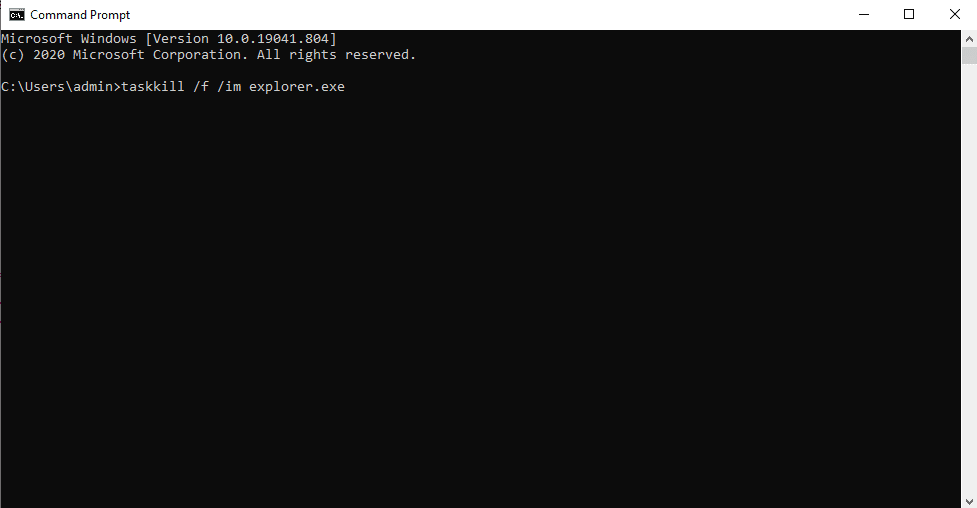
- Now, input the command to Restart. Type in: start explorer.exe and press Enter.
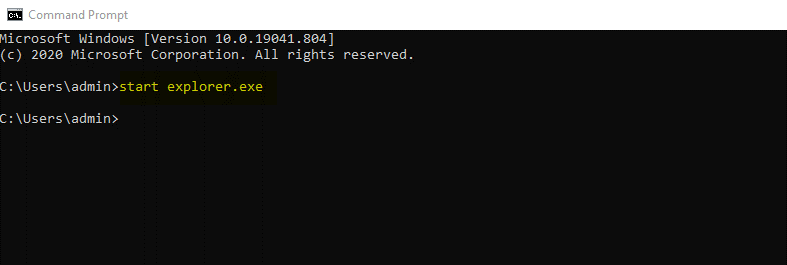
- Close Command Prompt and see if you’re able to use File Explorer.
Must Read: Ways To Clear Search History In File Explorer In Windows 10
Method 3: Update Or Uninstall & Reinstall Graphics Drivers
Sometimes the driver issues might create problems in the smooth functioning of Windows and its components. Therefore, we always recommend using a strong and reliable driver care utility to keep your driver’s updated. For instance, having Smart Driver Care, installed on your Windows will keep you informed of any of the driver updates or so. All you have to do is click on the single button i.e. Update All to update all the outdated drivers at once.
Click Here to Download Smart Driver Care
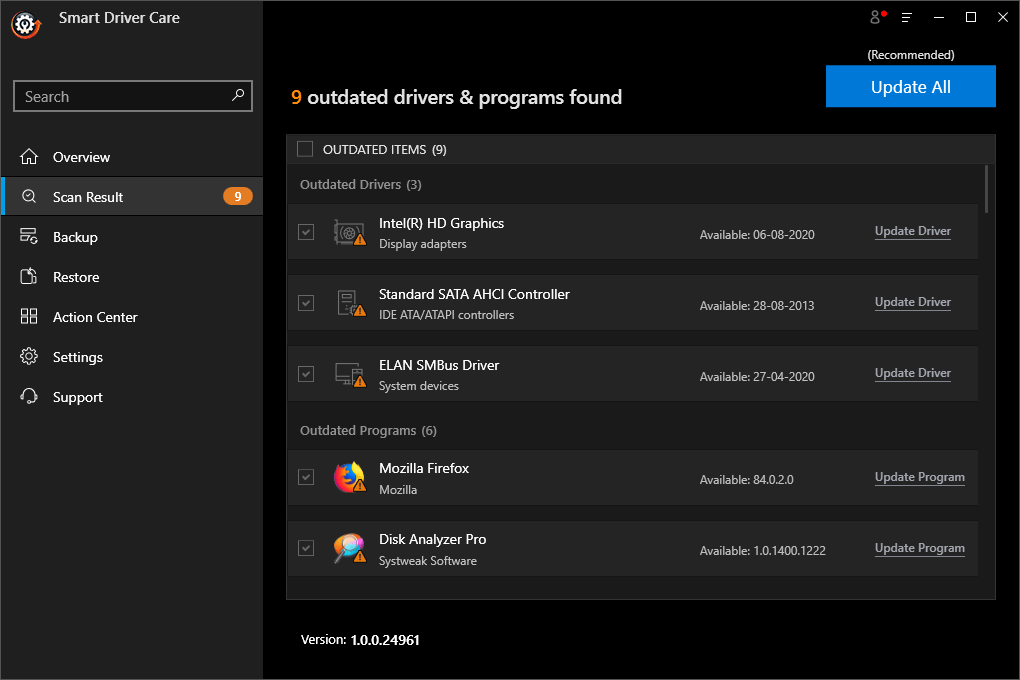
Also, another important thing to consider is reinstalling the graphic drivers to ensure that it is not the cause leading to File Explorer not responding error. For this, first Uninstall the driver and then restart your computer to automatically reinstall it. Here’s how:
- On your computer, open the Run window using the Win+R key or Start menu.
- Now type inmsc and click OK.

- Head to Display Adapters and click on the arrow beside to expand for more options.
- Right click on the available Graphic Driver and click
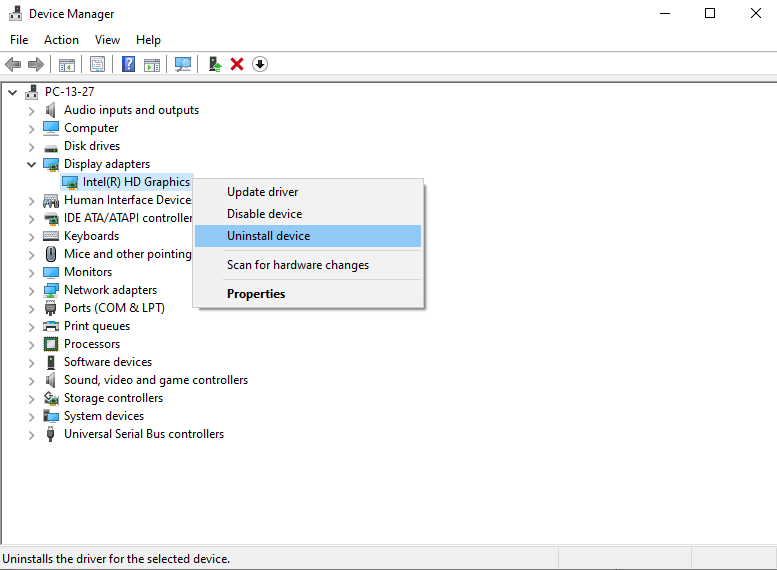
- Wait for the uninstallation process to finish and close the Device Manager Window.
Thereafter, restart your PC to save changes and reinstall the display drivers back again.
Method 4: Clear Quick Access History
If you’re unable to open File Explorer, you can solve this problem using this method. For this follow the steps below:
- Type in File Explorer Options in the Windows search box located at the Taskbar.
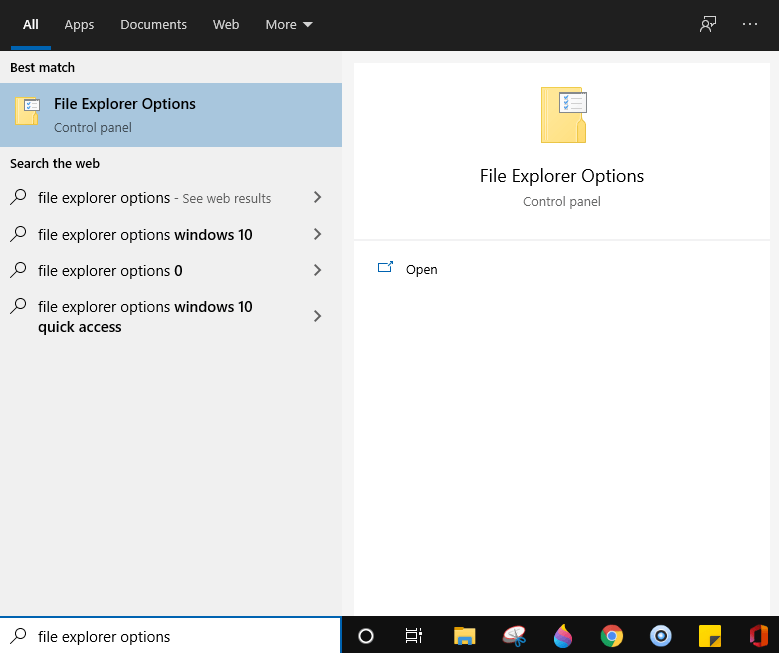
- On the screen that opens next, head to the General tab. Under the Privacy section and click on Clear. Make sure that both the options are ticked before you click on Clear.
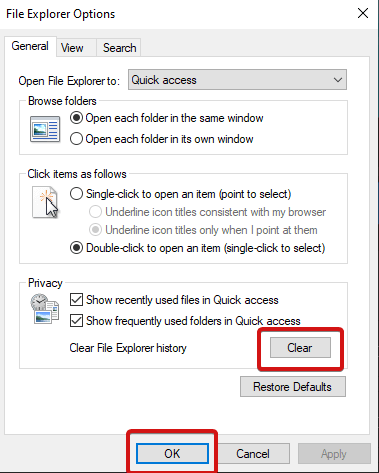
- Close the window and try opening File Explorer now.
Method 5: Disable Details and Preview Pane
- Head to File Explorer.
- Click on View Tab.
- You’ll see options like Details Pane and Preview Pane.

- Ensure that they are Disabled.
Method 6: Run System File Checker Scan.
- Last but not least, try running System File Checker scan using the command prompt on Windows. Here’s how.
- Open Command Prompt directly from the Search Bar.
- Type in sfc /scannow and press Enter.

- Wait for the process to finish scanning. If there will be any errors, they will be automatically solved through SFC scan.
Conclusion
That’s all folks! You’ll now be able to fix File Explorer not responding error. Try these ways out and let us know which one has helped you in getting back your File Explorer working again. Also, remember our recommendation to keep your drivers updated using Smart Driver Care. Let us know if you have any questions or concerns in the comments section below.
Next Read
Best Command Prompt Tips and Tricks To Know
Customize Command Prompt in Windows 10







Leave a Reply